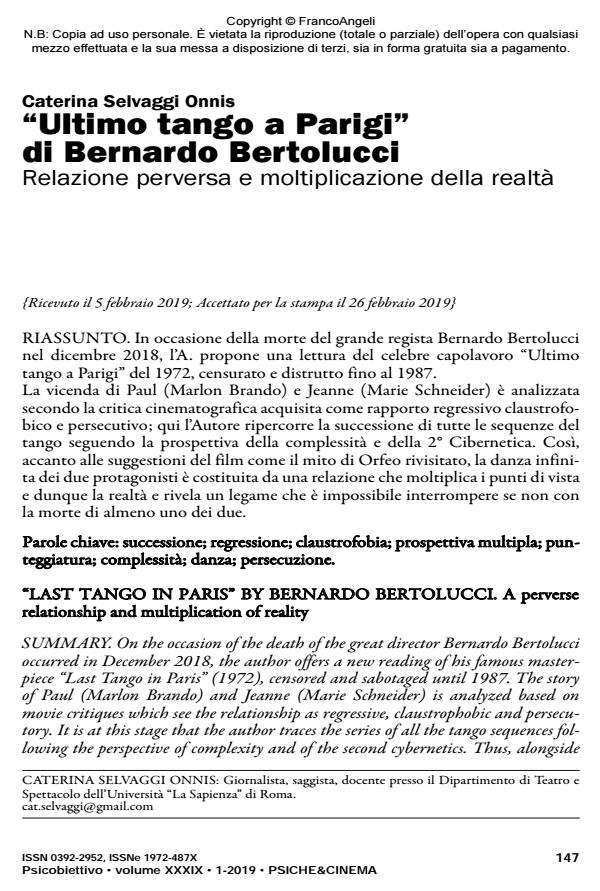"Last tango in paris" by bernardo bertolucci. A perverse relationship and multiplication of reality
Journal title PSICOBIETTIVO
Author/s Caterina Selvaggi Onnis
Publishing Year 2019 Issue 2019/1
Language Italian Pages 12 P. 147-158 File size 142 KB
DOI 10.3280/PSOB2019-001014
DOI is like a bar code for intellectual property: to have more infomation
click here
Below, you can see the article first page
If you want to buy this article in PDF format, you can do it, following the instructions to buy download credits

FrancoAngeli is member of Publishers International Linking Association, Inc (PILA), a not-for-profit association which run the CrossRef service enabling links to and from online scholarly content.
On the occasion of the death of the great director Bernardo Bertolucci occurred in December 2018, the author offers a new reading of his famous masterpiece "Last Tango in Paris" (1972), censored and sabotaged until 1987. The story of Paul (Marlon Brando) and Jeanne (Marie Schneider) is analyzed based on movie critiques which see the relationship as regressive, claustrophobic and persecutory. It is at this stage that the author traces the series of all the tango sequences following the perspective of complexity and of the second cybernetics. Thus, alongside the associations of the movie, such as the myth of Orpheus revisited, the everlasting dance of the two main characters is formed by a relationship that not only multiplies the points of view but also the reality. This intersection reveals a bond that is impossible to interrupt without the death of at least one of the two.
Keywords: Succession; Regression; claustrophobia; Multiple Perspectives; Punctuation; Complexity; Dance; Persecution.
Caterina Selvaggi Onnis, "Ultimo tango a Parigi" di Bernardo Bertolucci Relazione perversa e moltiplicazione della realtà in "PSICOBIETTIVO" 1/2019, pp 147-158, DOI: 10.3280/PSOB2019-001014